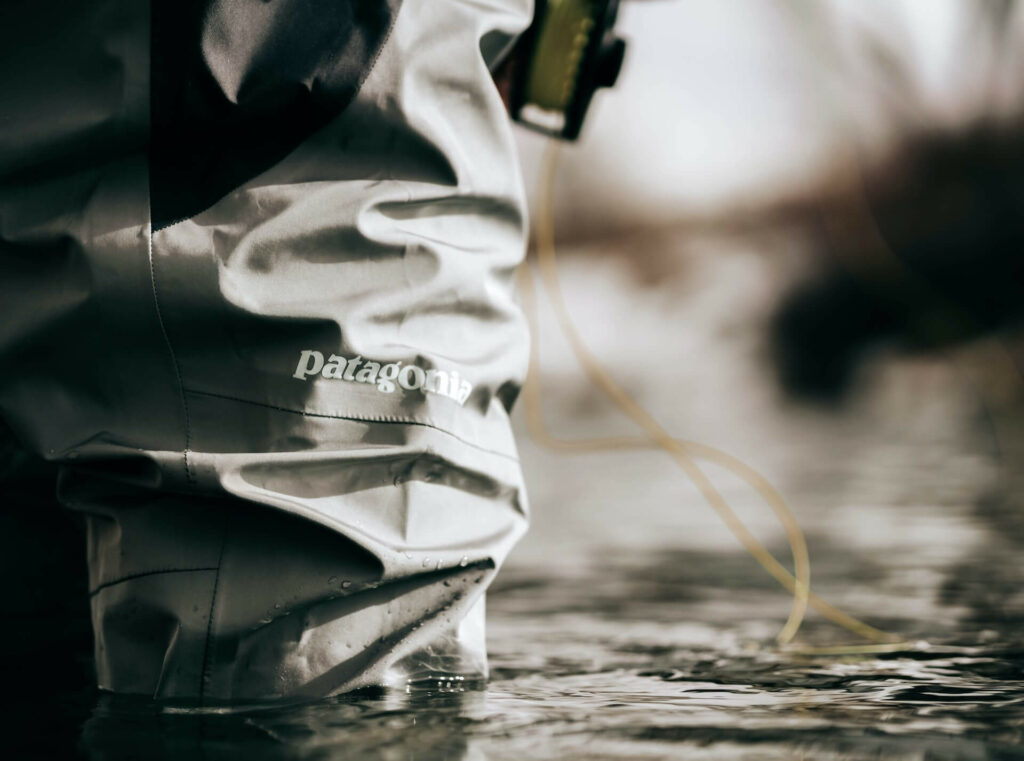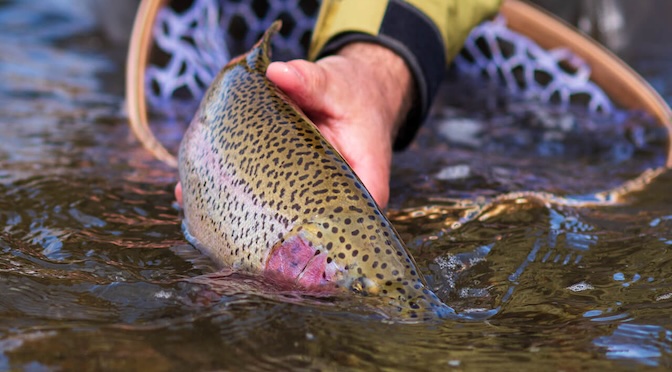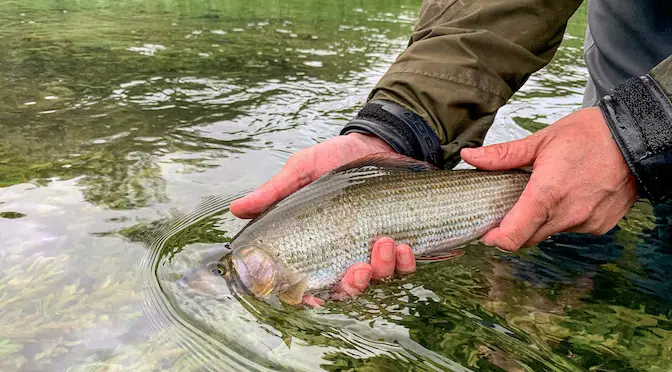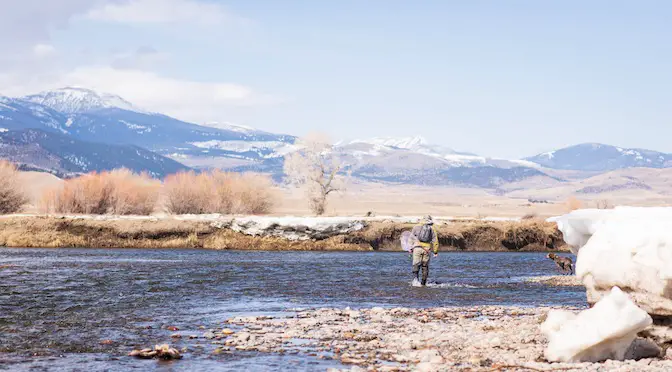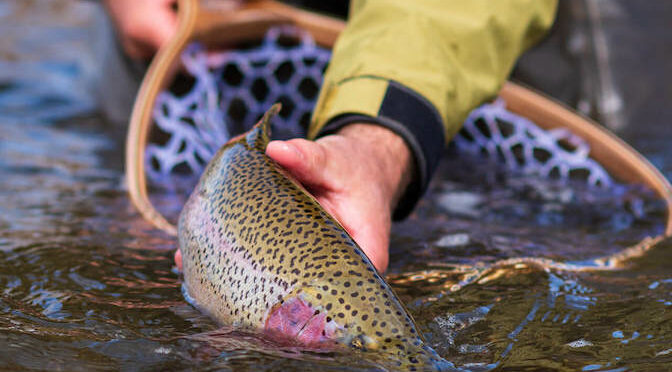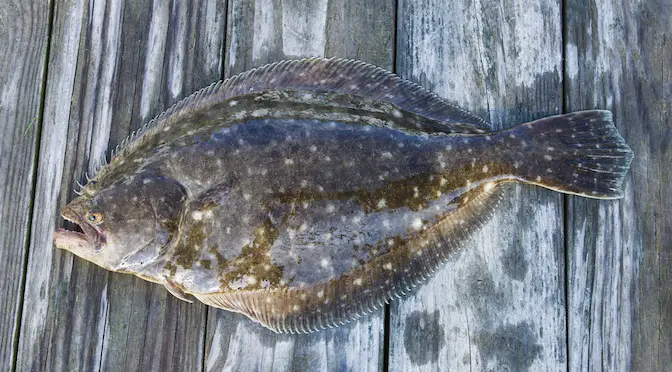Last updated on January 9th, 2024.
- Wading Wisdom #13 – Simon Gawesworth - July 7, 2025
- On the Water with the Korkers Bantam Lite - June 26, 2025
- How to Find Trout in Rivers & Streams Anywhere - June 13, 2025
Ask any angler, and they’ll likely wax poetic about their trusty fishing waders.
These aren’t just pieces of gear; they’re beloved companions, shielding us from the unpredictable moods of our fishing environments. Like any deep relationship, we have to put in the effort to ensure our waders feel cherished, and they’ll reward us with durability and top-tier performance.
So, fellow fisherfolk, let’s journey together through the essential steps of showing our waders some TLC, ensuring they’re always geared up for our next escapade!
Selecting Your Wader Soulmate
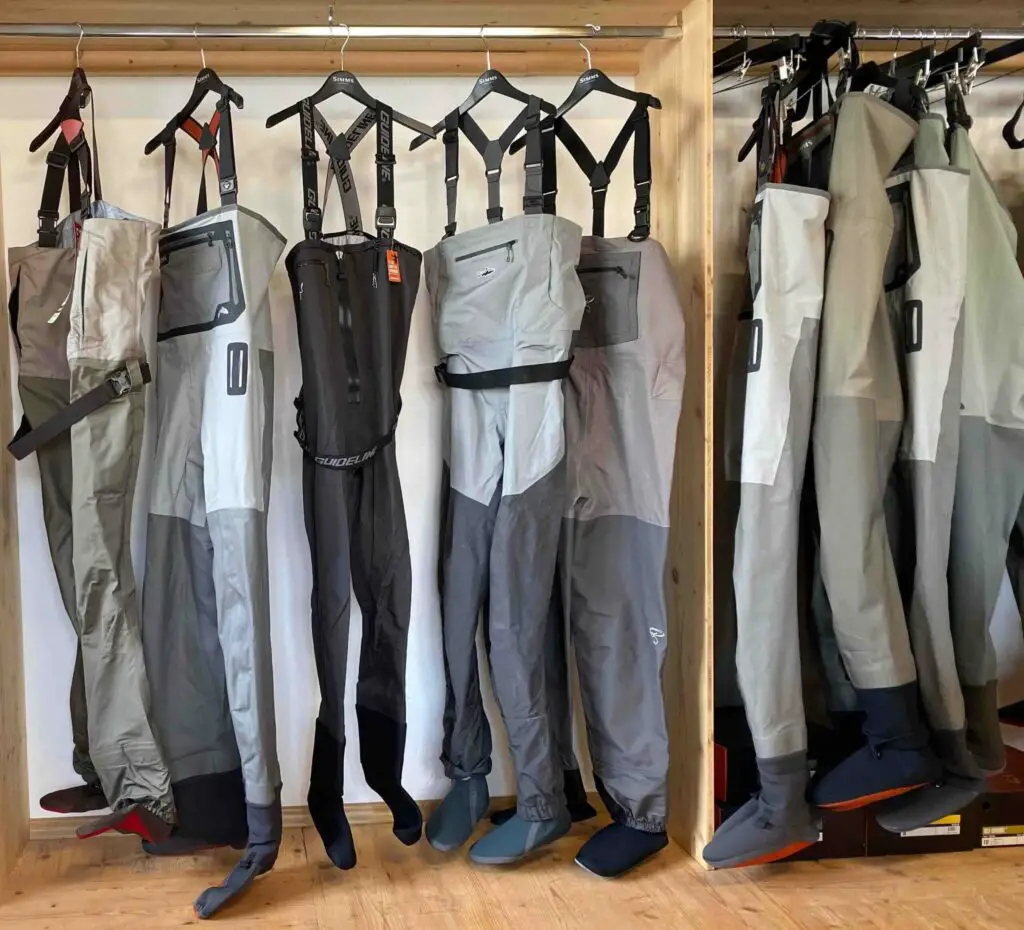
Every lasting relationship starts with the right choice. Picking your perfect pair isn’t just about snugness and style; it’s about foreseeing the future. By selecting the ideal material, matched to the environments you’ll explore, you’re preventing potential heartbreaks like unnecessary wear and damage.
Let’s take a moment for neoprene waders. Their snug embrace keeps us cozy in those chilly waters, a dream for colder fishing adventures. Yet, they’re also high maintenance. Neoprene has a tendency to dry out and crack if neglected. So, like any partnership, you need to understand and cater to your wader’s unique quirks and needs.
Every material, be it neoprene, rubber, or breathable fabric, comes with its love language. Tuning into these nuances can make all the difference in ensuring a long, happy life together.
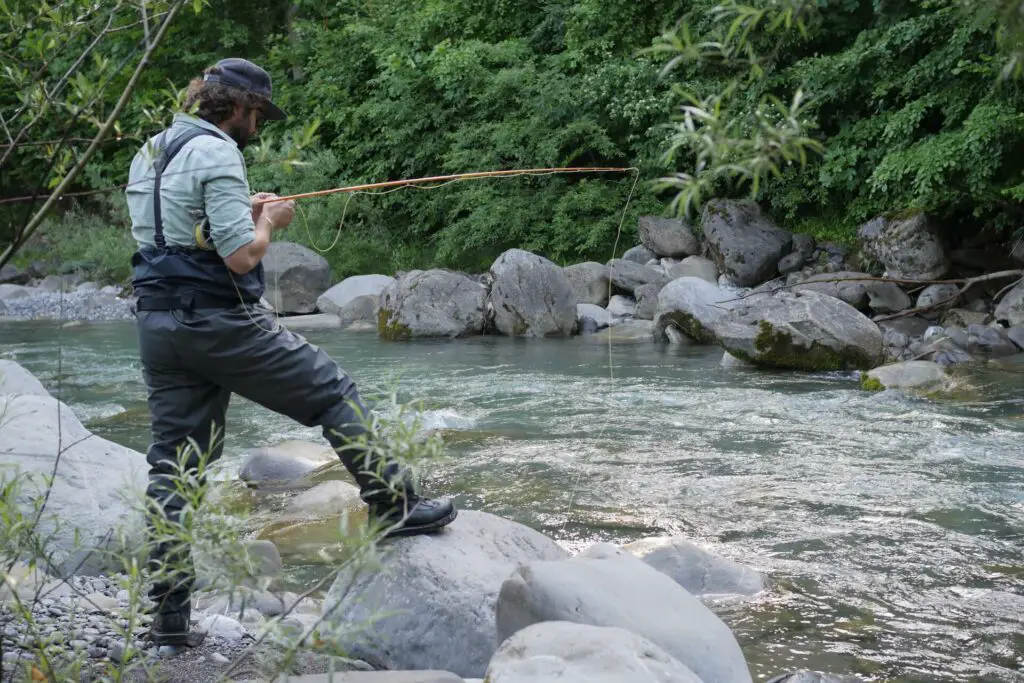
A Spa Day: The Cleaning Ritual
Who doesn’t love a spa day? For our waders, cleaning is that rejuvenating experience. It’s not just about brushing off the memories of the last adventure. Instead, it’s a proactive measure to keep them looking and feeling their best.
A gentle rinse with fresh water after every trip removes those pesky particles and potential irritants. Opt for specialized wader cleaners, and avoid the harsh chemicals that might upset your wader’s delicate balance.
Remember, this spa-like pampering isn’t just cosmetic. It’s a deep cleanse that ensures longevity, letting your waders know they’re always valued and cared for.
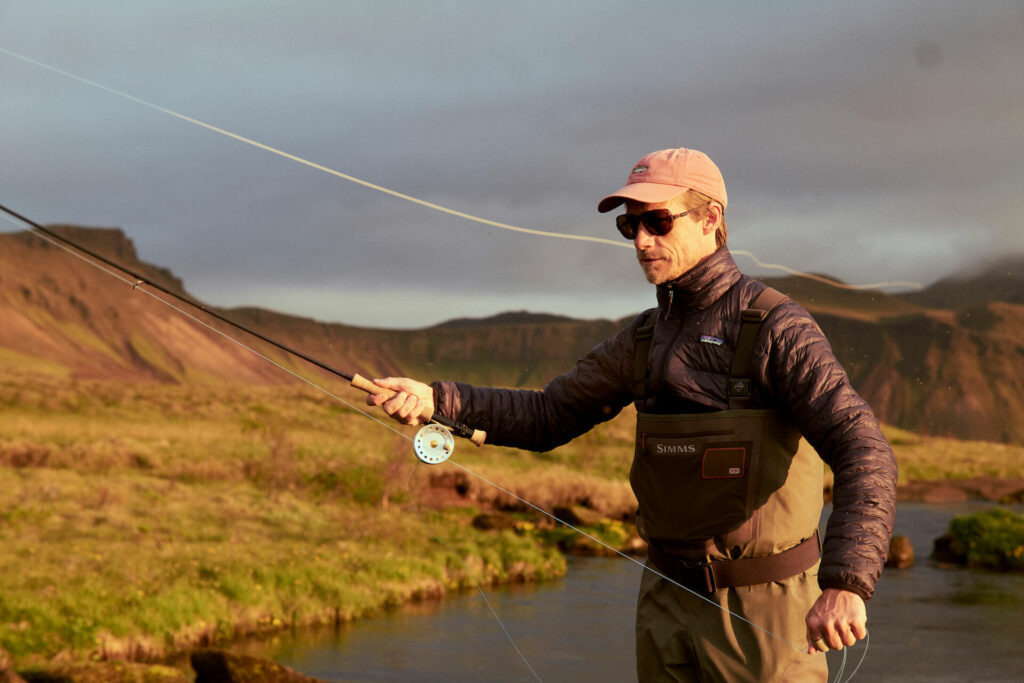
Doctor’s Check-Up: Inspection and Repairs
Would you ignore a persistent cough or a mysterious ache? Likely not. So, why should your waders’ niggles be any different? Regular check-ups, looking for wear or minor damages, can catch problems before they blossom into bigger issues.
Got a tiny tear or a slight leak? That’s what repair kits and sealants are for. But sometimes, just like we need a specialist, so do our waders. Don’t be shy to consult professionals for bigger fixes, ensuring your trusty partner stays in tip-top shape.
Tucking Them In: Storage Matters
Believe it or not, how you store your waders is a testament to your affection. Imagine it as tucking them into a comfy bed. First, ensure they’re dry – this is their cozy blanket. Then, find that perfect spot, away from the harsh sun and dampness – this is their peaceful bedroom. The right storage spot ensures your waders wake up refreshed and eager for your next outing together.
Seasonal Pampering: Off-Season Care
Just as we switch up our wardrobes with the changing seasons, our waders too crave some seasonal love. When they’re not in active use, treat them to a special care routine. Clean them, dry them, and tuck them away in their perfect resting place, ensuring they emerge rejuvenated for the next season’s escapades.
Wrapping Up
Our fishing waders aren’t just tools; they’re partners in every fishing tale we weave. Showering them with regular care ensures they remain at our side, offering peak performance and unwavering protection. Dive deep into this loving maintenance routine, and you’re sure to enjoy countless happy moments by the water.
FAQs: Fishing Waders Maintenance
How do I properly clean my fishing waders?
Rinse your waders thoroughly with fresh water after each use to remove mud, sand, and other contaminants. Avoid harsh detergents; instead, use specialized wader cleaners or mild soap to prevent compromising the material. Ensure that they are thoroughly cleaned inside and out to maintain the fabric’s integrity.
What steps should I follow to properly store my waders?
Make sure your waders are fully dried before storing them. Choose a cool, dry storage area away from direct sunlight and extreme temperatures. Hang them upright, avoiding folding, to maintain their shape and prevent any unnecessary stress on the material.
How should I inspect my waders for potential issues or damages?
Regularly inspect your waders for signs of wear and tear, such as leaks, holes, or loose seams. Pay attention to areas prone to stress like knees and seams. Early detection of minor issues allows for timely repairs, preventing them from escalating into more significant problems.
What should I consider when choosing the right material for my waders?
Consider the environmental conditions where you’ll be fishing. Materials like neoprene are suitable for colder environments, while breathable fabrics are more comfortable in warmer conditions. Each material has its unique care and maintenance needs, which should align with the intended use and the angler’s willingness to maintain them properly.
Are there any specific maintenance practices to follow based on the changing seasons?
Yes, adapt your fishing waders maintenance practices according to the season. In the off-season, ensure that your waders are meticulously cleaned, thoroughly dried, and properly stored. This approach helps to preserve the waders’ condition, preparing them for use in the subsequent fishing seasons.

